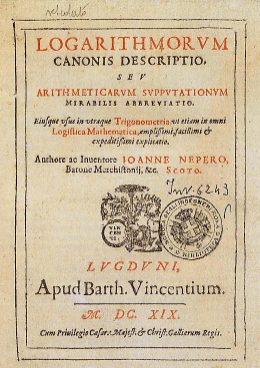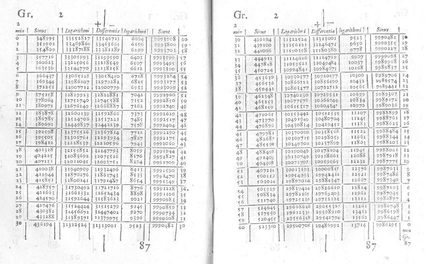Log Calculator (Logarithm)
This log calculator (logarithm calculator) allows you to calculate the logarithm of a (positive real) number with a chosen base (positive, not equal to 1). Regardless of whether you are looking for a natural logarithm, log base 2, or log base 10, this tool will solve your problem.
Read on to get a better understanding of the logarithm formula and the rules you need to follow. Besides, you might find some fascinating information, such as why logarithms are essential in our lives and where they are applied.
If you are also searching for other useful math calculators, do not hesitate to take a look at our cube root calculator, which enables you to calculate not only the cube root but also roots to any degree. If you are interested in knowing more about the rules behind the logarithms, access our article "Log Rules Made Simple: Understanding the Laws of Logarithms".
Prefer watching over reading? Learn all you need in 90 seconds with this video we made for you:
What is a logarithm?
A logarithmic function is an inverse of the exponential function. In essence, if a raised to power y gives x, then the logarithm of x with base a is equal to y. In the form of equations, aʸ = x is equivalent to logₐ(x) = y.
In other words, the logarithm of x, or logₐ(x), shows what power we need to raise a to (or if x is greater than 1, how many times a needs to be multiplied by itself) to produce the value x. From this view, we can represent the logarithm in the following way as well:
Hopefully, you now understand the definition of logarithm; in the following section, you can read about its two most frequently used forms.
The natural logarithm and the common logarithm
You can choose various numbers as the base for logarithms; however, two particular bases are used so often that mathematicians have given unique names to them: the natural logarithm and the common logarithm.
Natural logarithm
If you want to compute a number's natural logarithm, you need to choose a base that is approximately equal to 2.718281. Conventionally, this number is denoted by e, named after Leonard Euler, who defined its value in 1731. Accordingly, the logarithm can be represented as logₑx, but traditionally, it is denoted with the symbol ln(x). In finance and economics, you might also see the label log(x) used for the same function. Therefore, y = logₑx = ln(x), which is equivalent to x = eʸ = exp(y).
One practical way to understand the natural logarithm is to put it in the context of compound interest. That is the interest that is calculated on both the principal and the accumulated interest.
The formula for annual compound interest is as follows:
A = P(1 + r/m)ᵐᵗ
where:
- A — Value of the investment after t years;
- P — Initial value;
- r — Annual interest rate (in decimals);
- m — Number of times the interest is compounded per year or compounding frequency; and
- t — Numbers of years.
Suppose that you deposit some money for a year in a bank with a very high annual interest rate of 100% (corresponding to r = 1), and where compounding occurs frequently (thus m is large). It is easy to see how quickly the value of m increases if you compare yearly (m = 1), monthly (m = 12), daily (m = 365), or hourly (m = 8,760) frequencies. Now, imagine that your money is recalculated every minute or second so that m is huge.
Now let's check how the growing frequency affects your initial money:
m | (1 + 1/m)ᵐ |
|---|---|
1 | 2 |
10 | 2.59374… |
100 | 2.70481… |
1000 | 2.71692… |
10,000 | 2.71814… |
100,000 | 2.71826… |
1,000,000 | 2.71828… |
You may notice that even though the frequency of compounding reaches an unusually high number, the value of (1 + 1/m)ᵐ (which is the multiplier of your initial deposit) doesn't increase very much. Instead, it becomes somewhat stable: it's approaching a unique value already mentioned above, e ≈ 2.718281.
Since growth rates often follow a similar pattern as the above example, economics relies heavily on natural logarithms. Two common variables involve the natural logarithm: the GDP growth rate and the price elasticity of demand.
Common logarithm
The other popular form of logarithm is the common logarithm with the base of 10, log₁₀x, which is conventionally denoted as lg(x). (Sometimes, however, the common logarithm is also written as log(x), so when you see this label, make sure to carefully check the author's intention!) It is also known as the decimal logarithm, the decadic logarithm, the standard logarithm, or the Briggsian logarithm, named after Henry Briggs, an English mathematician who developed its use.
As its name suggests, it is the most frequently used form of logarithm. It is used, for example, in our decibel calculator. Logarithm tables that aimed at easing computation in the past usually presented common logarithms, too.
The below table represents some frequent values of the common and natural logarithms. With 0+, we denote the value approached by logarithms as x approaches 0 from above.
x | log₁₀x | logₑx |
|---|---|---|
0 | undefined | undefined |
0+ | -∞ | -∞ |
0.0001 | -4 | -9.21034 |
0.001 | -3 | -6.907755 |
0.01 | -2 | -4.60517 |
0.1 | -1 | -2.302585 |
1 | 0 | 0 |
2 | 0.30103 | 0.693147 |
3 | 0.477121 | 1.098612 |
4 | 0.60206 | 1.386294 |
5 | 0.69897 | 1.609438 |
6 | 0.778151 | 1.791759 |
7 | 0.845098 | 1.94591 |
8 | 0.90309 | 2.079442 |
9 | 0.954243 | 2.197225 |
10 | 1 | 2.302585 |
20 | 1.30103 | 2.995732 |
30 | 1.477121 | 3.401197 |
40 | 1.60206 | 3.688879 |
50 | 1.69897 | 3.912023 |
60 | 1.778151 | 4.094345 |
70 | 1.845098 | 4.248495 |
80 | 1.90309 | 4.382027 |
90 | 1.954243 | 4.49981 |
100 | 2 | 4.60517 |
200 | 2.30103 | 5.298317 |
300 | 2.477121 | 5.703782 |
400 | 2.60206 | 5.991465 |
500 | 2.69897 | 6.214608 |
600 | 2.778151 | 6.39693 |
700 | 2.845098 | 6.55108 |
800 | 2.90309 | 6.684612 |
900 | 2.954243 | 6.802395 |
1000 | 3 | 6.907755 |
10000 | 4 | 9.21034 |
How to calculate logarithm with an arbitrary base?
If you want to compute a logarithm with an arbitrary base but can only access a natural logarithm calculator or a log 10 base calculator, you need to apply the following rules:
- logₐ(x) = ln(x) / ln(a)
- logₐ(x) = lg(x) / lg(a)
If you would like to understand how to change the basis of your logs, check out our article "Change-of-base Formula Made Easy".
Log base 2: an example
Let's assume you want to use this tool as a log base 2 calculator. To calculate the logarithm of any number, simply follow these simple steps:
- Decide on the number you want to find the logarithm of. Let's say it's 100.
- Decide on your base - in this case, 2.
- Find the logarithm with base 10 of the number 100. lg(100) = 2.
- Find the logarithm with base 10 of the number 2. lg(2) = 0.30103.
- Divide these values by one another: lg(100)/lg(2) = 2 / 0.30103 = 6.644.
- You can also skip steps 3-5 and input the number and base directly into the log calculator.
History of the logarithm
Evidence suggests that the notion of logarithms was already present in the 8th century India. However, the developed concept of logarithm appeared the first time in the book titled Mirifici logarithmorum canonis descriptio (the construction of the marvelous canon of logarithms) printed in 1614. It was the result of 20 years of research by the Scottish mathematician John Napier who aimed to ease computations that he encountered as an astronomer and physicist.

The first part of the book explains properties and applications of logarithms. The second part illustrates examples of logarithmic computations through ninety pages of tables. Napier also enunciates his work's limitations and provides analogies, examples, warnings, reminders, and conclusions. Therefore the book can function as an instruction manual. He doesn't, however, elaborate on how the tool was created.

💡 The word logarithm is derived from a composition of two Greek words: logos, which refers to a ratio, and arithmos, which means 'number'. Therefore, logarithms are ratio numbers; numbers that relate to ratios.
For our generation, it might not be easy at first glance to appreciate the invention of the logarithm since we already employ modern calculators and computers for mathematical computations. However, back in the 17th century, it was a discovery that profoundly impacted people's lives. To resolve mathematical problems before the appearance of logarithms could take hours, days, or even years.
The first explicit advancement that logarithms brought forward was the enhancement of computations by converting multiplication and divisions into addition and subtraction. The only additional effort was looking up logarithms and antilogarithms in tables.
🙋 You can learn more about how to use log tables by reading .
The new computational procedure was instrumental in the field of astronomy. Napier's scientific activities coincided with the era of new developments in astrophysics. As a result, many astronomers were struggling with endless calculations to detect the position of the planets using Copernicus's theory of the solar system. Johannes Kepler, at the time working on his famous laws of planetary motions, was among them.
Thanks to Napier's endeavor, he could substantially reduce his workload, which previously demanded close to a thousand pages of computations, allowing him to devote more time to philosophical speculations.
The famous British mathematician Henry Briggs quickly realized the new invention's capability: he moved to Scotland to meet Napier so they could begin to search for potential advancements together.
As a result, after modifying the original idea, in 1617, they formulated the first table of the logarithms based on powers of 10. In 1624, after Napier's death, Briggs published his book, Arithmetica logarithmic which presented logarithmic tables for 30 thousand natural numbers to 14 decimal places. This form of logarithms is considered today as common logarithms.
The slide rules
The growing popularity of this new mathematical instrument stimulated further explorations. In 1620 Edmund Gunter introduced the calculating line of the logarithm, a physical device used for multiplications and divisions.
The early version of the tool, which required a pair of compasses for measuring, was advanced by William Oughtred around 1622. He designed the conventional slide rule, a device with two rulers sliding next to each other.

Oughtred's invention further facilitated the computation of logarithms. Slide rules became a standard computational device in professions demanding arithmetic. Architects, engineers, scientists, and even astronauts relied on them for calculations until the advent of the Digital Revolution. Albert Einstein was using one, and the crews of the Apollo missions also took slide rules to space.
Compared to the early version of computers, the slide rule had many advantages:
- Small enough to keep in a pocket;
- Doesn't require a power source;
- Relatively cheap;
- Mechanically reliable;
- Simple to function; and
- Can solve any numerical problem related to normal conditions.

Logarithms in the real world
In the present day, modern computers and scientific calculators replaced the old-fashioned practices. Still, understanding the concepts behind logarithms can help you develop your mathematical skills. Logarithms still have multiple practical uses in many fields.
The fact that logarithms relate arithmetic progression to geometric progression suggests that certain phenomena in the real world might form a logarithmic pattern. Indeed, there are abundant examples in nature and our practical life, which can be attributed to the magical logarithm.
For example, the following natural phenomena depict a logarithmic spiral:
- Shell of a nautilus

- Galaxies

- Cyclones

Besides, there are other phenomena which are measured on the logarithmic scale:
- Mineral hardness — Mohs Scale;
- Intensities of sounds — Decibels (dB);
- Wind intensity — Beaufort Scale;
- Earthquakes — Richter Scale; and
- Acidity — pH.
💡 Did you know logarithm helps calculate the noise figure value, which is significant in areas of study of noise reduction and control.
Applying logarithms to arithmetic computations
Before the end of the 1970s, when pocket calculators became accessible to the general public, carrying out computations, especially with fractions, demanded substantial manual effort. To alleviate this tedious work, the application of logarithms served a practical function.
To utilize the logarithm's technical advantage, we need to be familiar with its basic properties. Presumably, you have already met these rules, but the table below displays them to remind you.
Rule or special case | Formula |
|---|---|
Product | ln(x × y) = ln(x) + ln(y) |
Quotient | ln(x/y) = ln(x) − ln(y) |
Log of power | ln(xy) = y × ln(x) |
Log of e | ln(e) = 1 |
Log of one | ln(1)=0 |
Log reciprocal | ln(1/x) = −ln(x) |
The previous rules can be applied to several log equations. You can learn how to systematically solve them in the article "".
To demonstrate how useful it was in pre-calculator times, let's assume that you need to compute the product of 5.89 × 4.73 without any electronic device. You could do it by merely multiplying things out on paper; however, it would take a bit of time. Instead, you can use the logarithm rule with log tables and get a relatively good approximation of the result.
If you had a log table, you could quickly check the logarithm of these numbers (or you use the Internet to find an ), but let's cheat a bit and use our calculator for this purpose now.
and
By applying the first rule we can rewrite the following equation:
We still don't know what the exact result is, so we take the exponent of both sides of the equation above with some change on the right side.
Now what you would need to do is to check 100.4449761 in an anti-log table or alternatively you check in our antilog calculator. What is the antilog of 0.4449761 in base 10? 2.785968.
Rewriting the equation:
Most probably, the above procedure seems demanding compared to just entering the numbers into a pocket calculator or using any capable application like our calculator. To show how the power of logarithms might help you out even in our modern times, let's consider the factorial of 100, which is the product of all integers from 1 to 100.
If you tried to resolve this problem using a regular pocket calculator, you would probably fail, as the result is a massive number with many digits.
But with the help of logarithms, you may rewrite (with some rounding) the operation as:
Clever, isn't it?
FAQs
What is log 1?
The logarithm of one is always zero, no matter the logarithm's base: logₐ 1 = 0 for every a.
Can you have a negative log?
Whether or not you can have a negative log depends on what you actually mean by a negative log:
- We can take the negative of a log: - logₐ(x) = logₐ(1/x).
- But you can't compute the log of a negative number.
Is log and ln the same?
No, in most cases, log and ln are not the same. The standard mathematical notation uses:
- ln or log for the natural log (so with base e);
- lg or log for the logarithm with base 10; and
- Sometimes lg stands for the logarithm with base 2, in particular in texts about the binary system.
As you can see, the notation may be confusing. Always check what the authors mean by log!